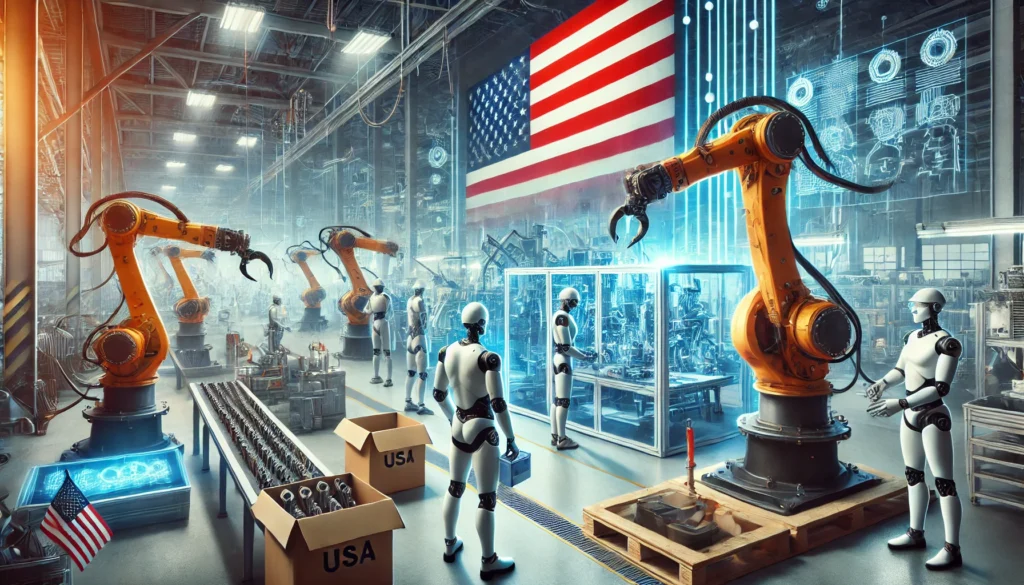
Introduction
The decline of manufacturing jobs in the United States has been a hot topic for decades. Once the backbone of the American economy, manufacturing employment saw a significant drop due to outsourcing, automation, and globalization. However, recent economic shifts, political policies, and supply chain disruptions have sparked renewed interest in bringing these jobs back. But is the revival of American manufacturing a reality, or is it just political rhetoric? Let’s explore the current landscape.
The Decline of Manufacturing Jobs in the U.S.
Offshoring and Globalization
For decades, companies have moved production overseas in pursuit of cheaper labor and lower operational costs. Countries like China, Mexico, and Vietnam became attractive manufacturing hubs due to their cost efficiencies.
Automation and Technological Advancements
Advancements in automation and robotics have also played a significant role in reducing the need for human labor in manufacturing. As factories adopt smart technologies, the demand for traditional blue-collar jobs declines.
Impact on the American Workforce
The loss of manufacturing jobs has led to economic challenges in many communities, particularly in the Rust Belt. Entire towns that once thrived on factory work have struggled with job losses, lower wages, and declining economic opportunities.
Are Manufacturing Jobs Making a Comeback?
Reshoring Initiatives
Reshoring—the process of bringing manufacturing jobs back to the U.S.—has gained momentum in recent years. Several factors are driving this trend:
- Rising labor costs overseas: Wages in countries like China have increased, reducing the cost advantage of offshoring.
- Supply chain disruptions: The COVID-19 pandemic exposed vulnerabilities in global supply chains, encouraging businesses to relocate production closer to home.
- Government incentives: Policies such as tax breaks, tariffs on imported goods, and infrastructure investments are encouraging domestic manufacturing.
Key Industries Leading the Way
Some industries have been more active in reshoring efforts than others. Notable sectors include:
- Semiconductor manufacturing: The U.S. government has invested heavily in bringing chip production back to American soil.
- Automotive industry: With the rise of electric vehicles (EVs), companies are opening new factories in the U.S.
- Medical supplies and pharmaceuticals: The pandemic highlighted the need for domestic production of critical healthcare products.
Challenges to a Full Recovery
While there are promising signs, several obstacles stand in the way of a full-scale return of manufacturing jobs:
- High labor costs: U.S. wages remain significantly higher than those in many competing manufacturing nations.
- Worker shortages: There is a growing skills gap, with many manufacturing positions requiring specialized training that fewer workers possess.
- Infrastructure and investment needs: Building new factories and supply chains domestically requires significant time and capital.
The Future of American Manufacturing
The Role of Automation and AI
The future of manufacturing in the U.S. will likely involve a hybrid approach—leveraging automation while still creating high-skilled jobs. AI-driven smart factories are expected to increase efficiency while requiring a workforce with advanced technical expertise.
Workforce Training and Education
To sustain a manufacturing resurgence, investment in workforce development is crucial. Programs focused on STEM (Science, Technology, Engineering, and Mathematics) education, trade schools, and apprenticeships can help bridge the skills gap.
Sustainable and Advanced Manufacturing
Emerging trends in green manufacturing and additive manufacturing (3D printing) are creating new opportunities. Companies focusing on sustainability and innovation may find a competitive edge in domestic production.
Conclusion
Manufacturing jobs are making a partial comeback to America, but the industry is evolving. While reshoring efforts and policy incentives are encouraging, challenges such as labor costs and workforce readiness remain significant hurdles. The future of American manufacturing depends on embracing technology, investing in education, and supporting domestic innovation.
For businesses and workers, staying informed and adapting to these changes will be key to success. Want to stay ahead in the evolving manufacturing landscape? Subscribe to our newsletter for the latest industry insights!

Andre Cuevas provides career insights, job search strategies, and professional advice to help individuals navigate the job market and achieve their career goals.




